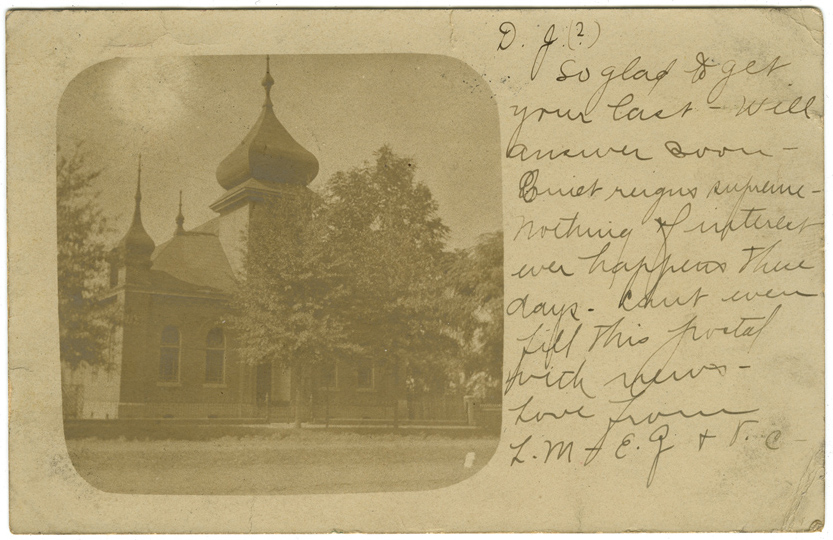4.3 Port Gibson, Mississippi
Temple Gemiluth Chassed, 706 Church Street
Bartlett and Budemeyer, architects; J. F. Barnes, builder; 1892
Publisher and publication date unknown, but postmarked March 9, 1906
The unusual Moorish–style red brick Temple Gemiluth Chassed (Bestowal of Loving Kindness) was built in 1892 and served as the hub of the Jewish population of Port Gibson for more than 80 years. According to a deed dated May 9, 1887, the Hebrew Benevolent Society of Port Gibson, which had been incorporated by the Mississippi legislature in 1870, purchased for $300 the land on which the synagogue would be built.
The building is notable for its central facade tower surmounted by a Russian-style cupola and for its many horseshoe windows and entryway. The entrance leads to a small hallway flanked by a classroom on the left and the rabbi’s study on the right, and then opens into the sanctuary, where the ark is placed as the focal point of an elaborate horseshoe arch.
In 1891, the contract for the erection of the temple was awarded to J. F. Barnes, a builder from Greenville, Mississippi. The estimated cost of the building was $5,500 to $7,000, completely furnished. While the temple was under construction, Mrs. Isidore Newman of New Orleans, a native of Port Gibson, donated the unusual chandeliers and the Torah regalia.
The cornerstone was laid “with imposing ceremonies” on January 3, 1892. Rabbi Max Heller of Temple Sinai, New Orleans, gave the keynote address. At the dedication on September 16, 1892, Rabbi Heller again gave a sermon, and the children’s and adult choirs sang. Rabbi A. M. Bloch, who had recently arrived to serve the congregation, then led Shabbat services. The congregation at this time included about 30 families.
Beginning in the early 20th century, but especially after World War II, younger Jews left the small town of Port Gibson for larger southern urban centers, and the Jewish community dwindled. The synagogue was finally closed in 1978. It sat empty for a decade and, just as it was to be demolished, Martha and Bill Lum, who lived next door, stepped in and purchased the building with the aim of restoring it, but without a specific use in mind. As of 2021, the building was being used by a group professing “Messianic Judaism” and could be visited by appointment.
